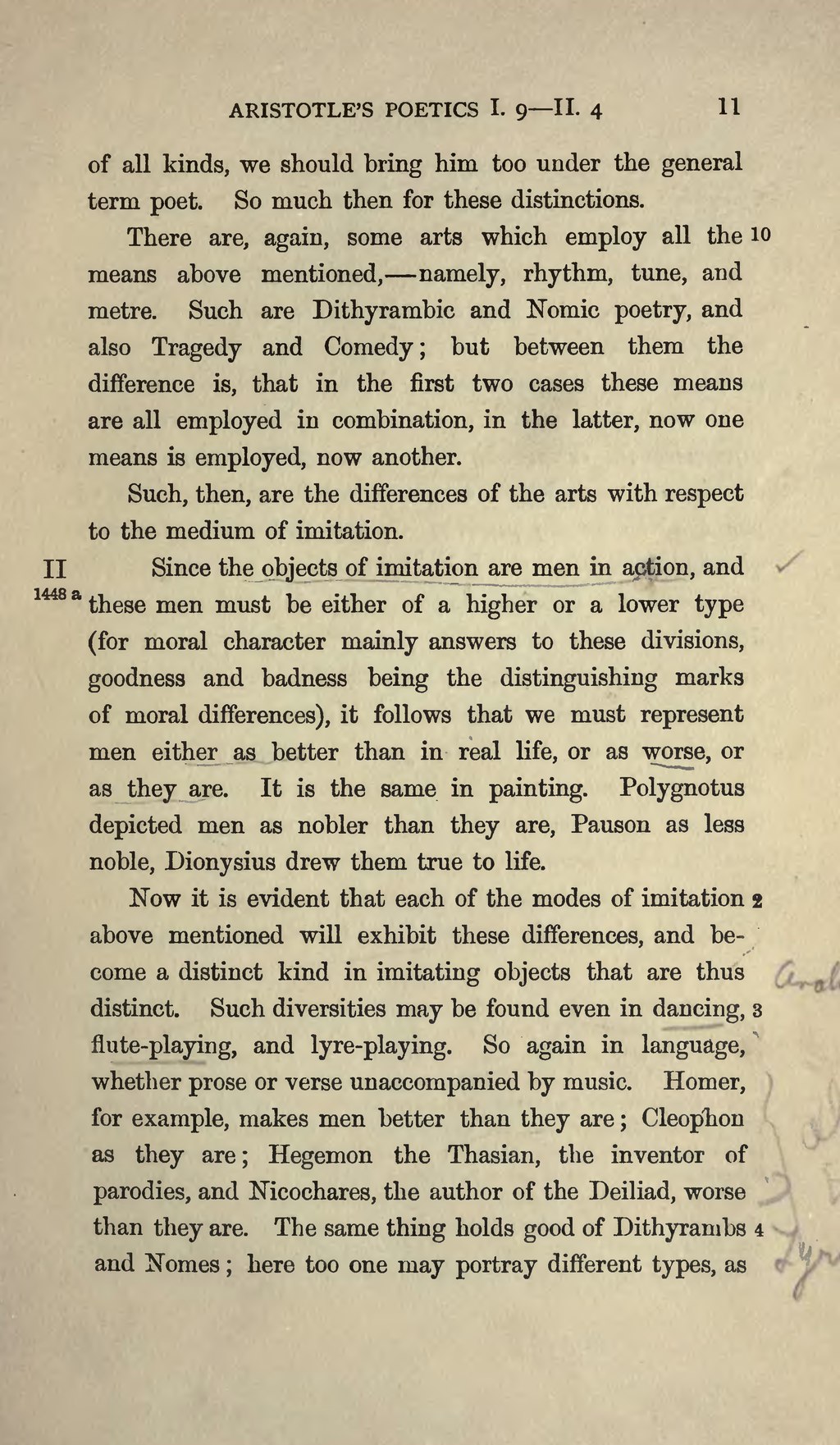of all kinds, we should bring him too under the general term poet. So much then for these distinctions.
There are, again, some arts which employ all the means above mentioned—namely, rhythm, tune, and metre. Such are Dithyrambic and Nomic poetry, and also Tragedy and Comedy; but between them originally the difference is, that in the first two cases these means are all employed in combination, in the latter, now one means is employed, now another.
Such, then, are the differences of the arts with respect to the medium of imitation
II
Since the objects of imitation are men in action, and these men must be either of a higher or a lower type (for moral character mainly answers to these divisions, goodness and badness being the distinguishing marks of moral differences), it follows that we must represent men either as better than in real life, or as worse, or as they are. It is the same in painting. Polygnotus depicted men as nobler than they are, Pauson as less noble, Dionysius drew them true to life.
Now it is evident that each of the modes of imitation above mentioned will exhibit these differences, and become a distinct kind in imitating objects that are thus distinct. Such diversities may be found even in dancing, flute-playing, and lyre-playing. So again in language, whether prose or verse unaccompanied by music. Homer, for example, makes men better than they are; Cleophon as they are; Hegemon the Thasian, the inventor of parodies, and Nicochares, the author of the Deiliad, worse than they are. The same thing holds good of Dithyrambs and Nomes; here too one may portray different types, as
